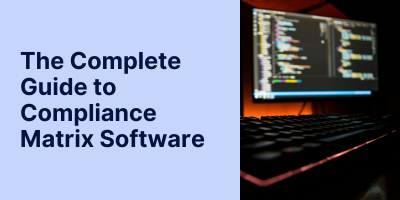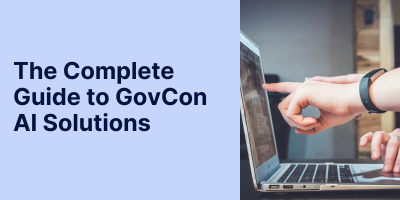Why Government Contractors Demand Flexible AI Workflows
Government contracting teams rely on highly refined capture and proposal processes. Over years of winning bids, each firm develops “tried and true” workflows for opportunity tracking, bid/no-bid decisions, proposal drafting, compliance checks, reviews, and more. Rather than forcing employees into a new, unfamiliar sequence of steps, contractors expect software to fit into their established processes. If a new AI feature doesn’t align with these routines, it risks being abandoned. In fact, many AI initiatives fail to gain adoption simply because they don’t fit into existing workflows or integrate smoothly into daily operations.
The Pitfalls of Rigid AI Solutions
- Heavy Customization Burden. Generic AI platforms often assume a fixed process. Out-of-the-box solutions typically require extensive customization to match contractor business rules, compliance needs, and workflows. In practice, contractors end up paying for workarounds or custom development just to make the tool usable.
- Lock-In and Escalating Costs. Once customized, rigid systems are hard to change. Promises of quick deployment rarely materialize, leading instead to vendor lock-in and ballooning maintenance costs. Each new regulation or internal change requires expensive upgrades or manual patches.
- Poor User Adoption. If an AI tool feels alien to users’ workflows, employees quickly ignore it. When AI is bolted onto old platforms without regard to process alignment, it feels like an afterthought and users revert to old habits. The result is often low adoption, wasted investment, and no measurable impact.
These risks make it clear why forcing contractors into rigid systems often backfires. Software for government contracting must speak the team’s language and mirror real-world processes. Otherwise, the cost and disruption of change management outweigh any potential AI benefit.
Why Flexible AI Platforms Win
By contrast, AI solutions with flexible workflows are designed to adapt to contractors’ needs.
- Preserve Proven Processes. Flexible platforms let companies keep the steps that make them successful. For example, Awarded.AI is built to seamlessly adapt to customer workflows. Teams can configure the order of tasks, approval gates, and data fields to match existing capture and proposal routines. This allows users to build automation on top of familiar steps without reinventing their process.
- Smooth Adoption & Change Management. When software natively reflects how teams already work, training goes faster and resistance drops. Minimal retraining is needed because workflows remain familiar—just faster and more automated.
- Multi-Division Agility. Large contractors often have very different processes across business units (e.g., defense vs. civilian projects). A flexible AI tool can be configured per division, whereas a rigid product forces a single pipeline. One Fortune 100 contractor selected Awarded.AI precisely for this reason: it allowed each segment to use its own proven process.
- Integration with Legacy Systems. Flexible AI platforms offer APIs and configurable data flows so they plug into existing tech stacks. They pull in past performance data, CRM records, and document repositories without requiring teams to start from scratch.
- Scalability and Future-Proofing. The best systems are scalable and flexible to accommodate both current and future needs. As regulations evolve and processes shift, a flexible architecture can be updated through configuration—avoiding costly redevelopment.
Together, these advantages mean flexible AI delivers faster ROI and higher win rates. Contractors can automate routine work without a costly “rip-and-replace.” When AI fits into existing processes, it becomes indispensable instead of being ignored.
Customer Perspective
This isn’t just theory. One of the top five government contractors by revenue selected Awarded.AI because of its flexibility. They needed to run different bid pipelines in each of their divisions without changing how teams operate day-to-day. Awarded.AI’s configurable workflow engine made it possible to deploy AI assistance immediately rather than waiting months for process re-training.
In essence, flexible AI platforms let contractors move faster without forcing people to change the way they already work. A rigid system would have required expensive change management with no guarantee of better results.
Choosing a Truly Flexible AI Solution
When evaluating AI tools, contractors should prioritize:
- Workflow Configurability: Ability to define or edit the sequence of tasks and approvals through an intuitive workflow editor.
- Integration Capabilities: Robust APIs and connectors to integrate with CRM, ERP, and legacy systems.
- Industry-Specific Fit: Solutions built specifically for government contracting, with FAR clauses and capture milestones pre-configured.
- Strong Onboarding Support: Vendors that provide hands-on implementation and workflow tailoring to accelerate adoption.
- Scalability: Platforms that can grow with the business and adapt to new divisions, contract types, or volume without expensive rework.
By applying these criteria, procurement teams can avoid rigid, one-size-fits-all tools and instead select AI platforms that truly align with their business.
Conclusion
In government contracting, proven processes are too valuable to discard. Contractors overwhelmingly prefer AI solutions that adapt to their workflows rather than forcing major change management. Flexible platforms deliver on AI’s promise by automating within familiar processes. They minimize disruption, protect proven practices, and give contractors the competitive advantage of faster, more accurate proposals.
Flexibility isn’t a luxury—it’s a necessity for success in GovCon.


%20(1)%20(1).png?width=1440&height=711&name=PSciAI-Save-time.-Deliver-faster.-Win-More-(Black)%20(1)%20(1).png)
-2.png)



%20(1200%20x%20600%20px).png)





-2.png)



